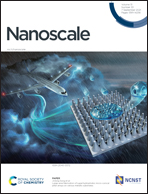Electronic modulation and proton transfer by iron and borate co-doping for synergistically triggering the oxygen evolution reaction on a hollow NiO bipyramidal prism†
Abstract
Designing an Earth-abundant and inexpensive electrocatalyst to drive the oxygen evolution reaction (OER) for high-purity hydrogen production is of great importance. Herein, the cation (iron) and anion (borate) co-doping strategy was proposed to effectively trigger the OER performance on a low-cost NiO material. The optimal hollow Fe/Bi-NiO bipyramidal prism shows superior OER performance, and displays a low overpotential (261 mV) at 10 mA cm−2, accompanied by a low Tafel slope (46 mV dec−1), excellent intrinsic activity and robust stability. The overall alkaline water splitting using Fe/Bi-NiO/NF as an anode affords low cell voltages of 1.50 and 1.63 V at 10 and 100 mA cm−2, and operates steadily at a high current density of 100 mA cm−2 for 55 h without decay. The excellent electrocatalytic activity could be ascribed to the hollow structure to shorten the mass transfer pathway, the electronic modulation by Fe doping, the increased accessible electroactive sites created by oxygen vacancies through borate doping, and the formation of BO33−-OH− to accelerate the deprotonation of OHads.



 Please wait while we load your content...
Please wait while we load your content...